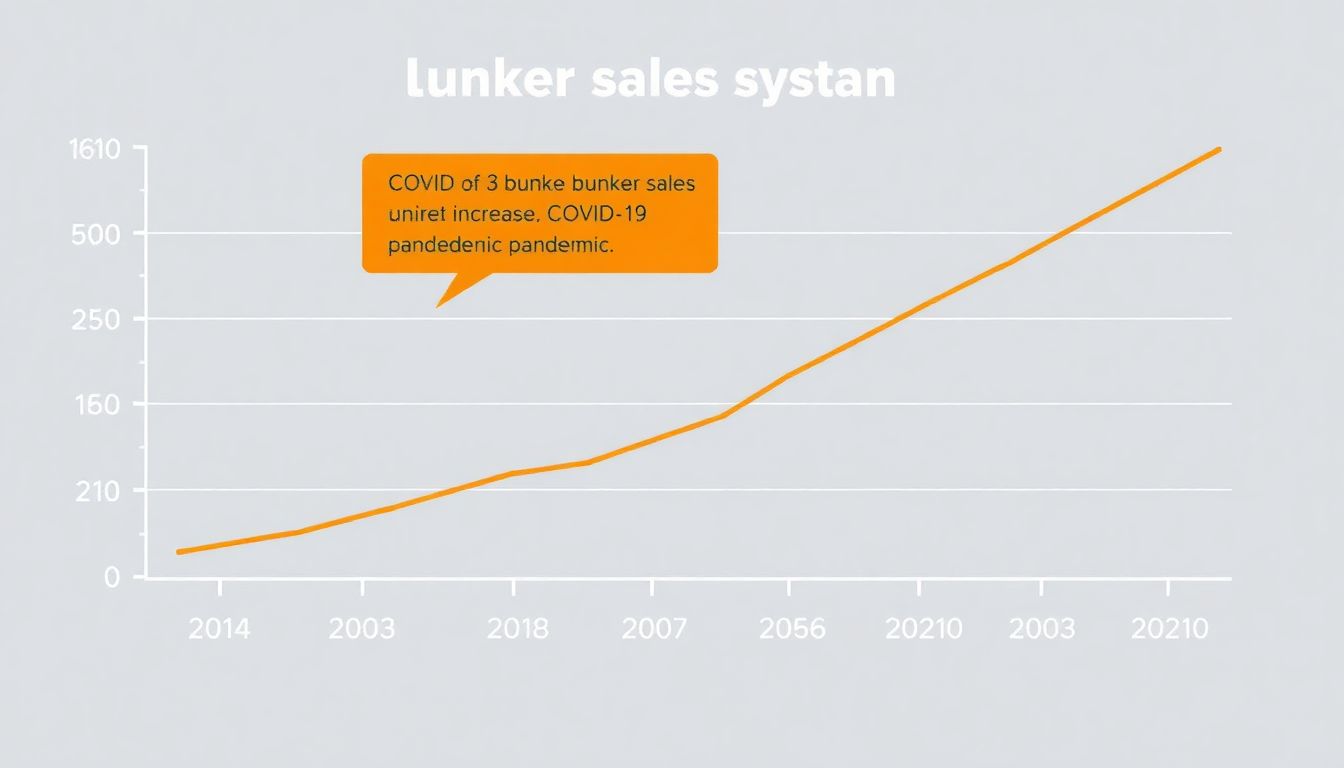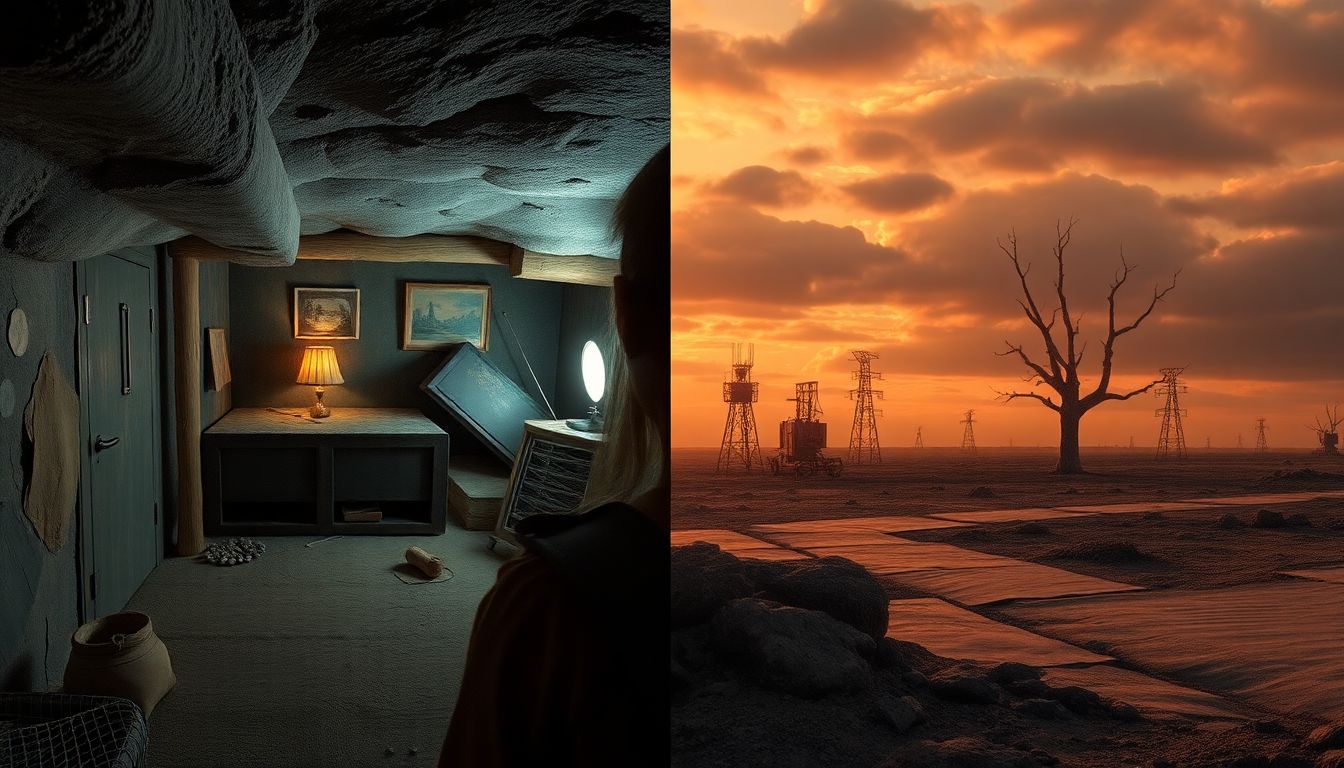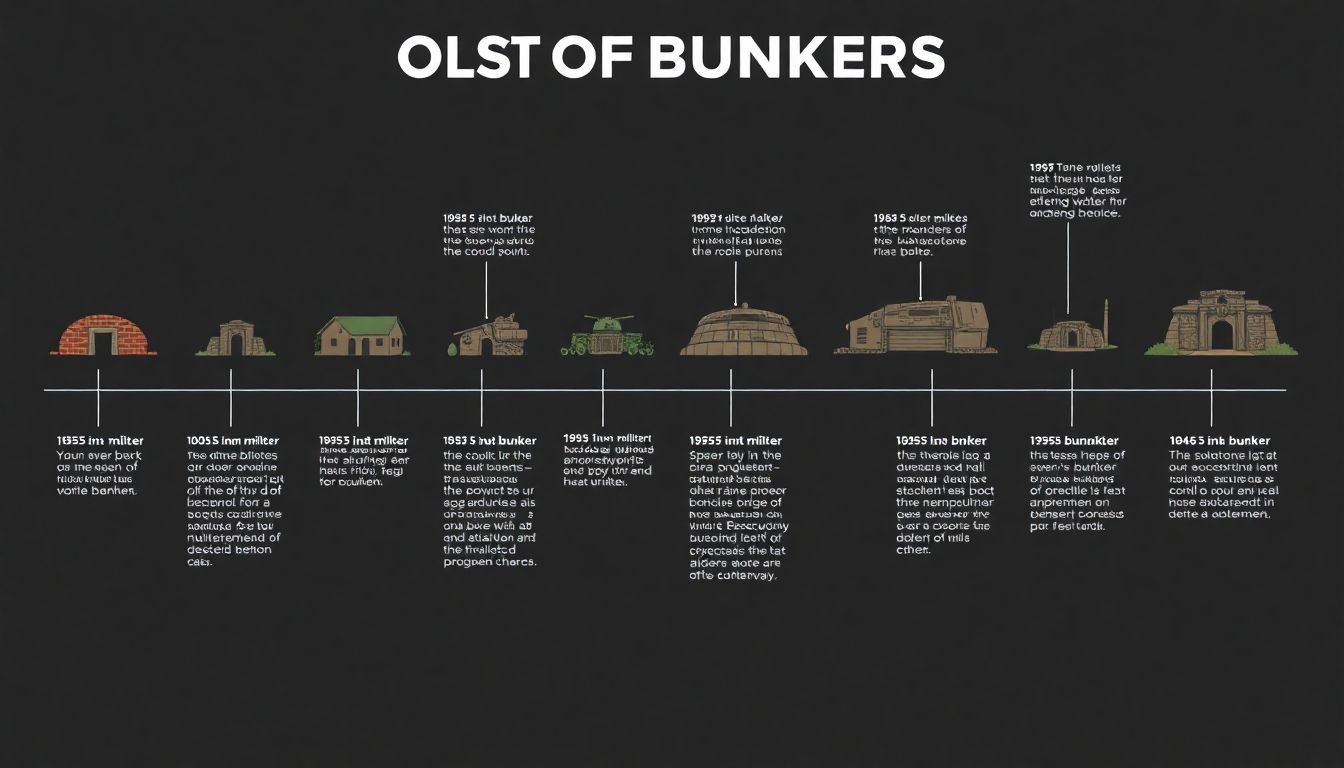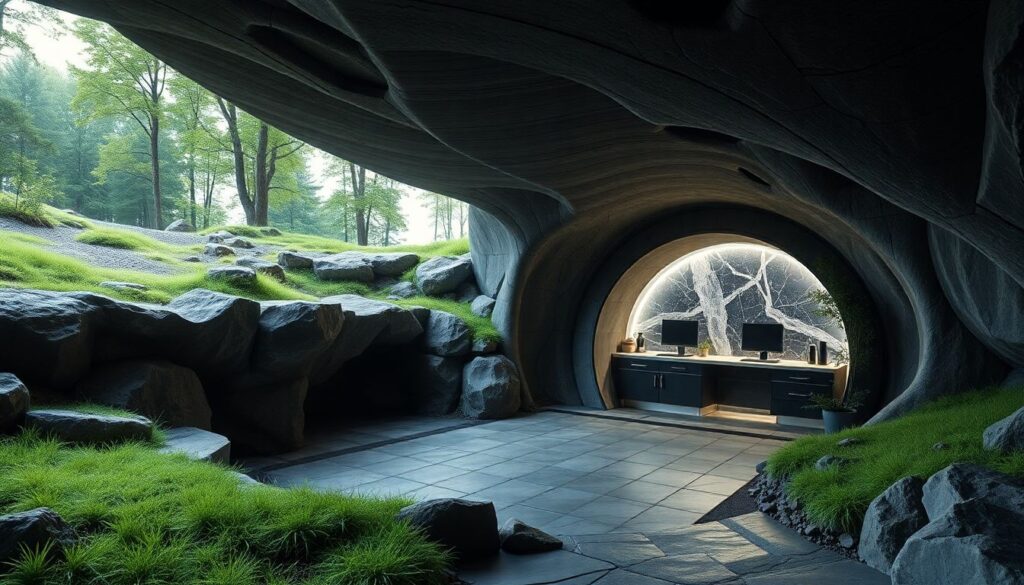Welcome to our in-depth exploration of the rising trend in nuclear bunker sales. As global uncertainties mount, more people are considering the once unthinkable—building private bunkers to weather catastrophic events. Join us as we delve into the history, current trends, and controversies surrounding this fascinating topic.
A Deep Dive into the Growing Trend of Private Survival Shelters
Imagine descending into the heart of the Earth, where a modern, luxurious underground bunker awaits, far removed from the chaotic world above. This isn’t your typical bunker—a cramped, dimly lit space with bare necessities. Instead, picture an expansive, state-of-the-art sanctuary, complete with high-tech amenities that would make even the savviest tech enthusiast swoon. Biometric scanners grant entry to sleek, glass-walled rooms, while automated climate control systems maintain the perfect atmosphere. A panoramic digital sky ceiling mimics the natural light cycle, ensuring that you never miss the beauty of a sunrise or sunset.
The bunker’s amenities are nothing short of extraordinary. An infinity pool stretches out, its water shimmering under artificial sunlight, while a fully equipped gym and yoga studio await your daily workout. There’s a cinema room with plush seating and a massive screen, perfect for movie marathons. A gourmet kitchen, stocked with the finest ingredients, caters to your culinary desires, and a wine cellar houses an enviable collection of vintage labels.
Above ground, the landscape is a lush, peaceful haven that belies the cutting-edge technology hidden beneath. Rolling green hills, vibrant gardens, and serene water features create a postcard-perfect scene. A dense forest surrounds the property, providing both privacy and a sense of tranquility. The only hint of the bunker’s existence is a discreet, modern entrance, seamlessly integrated into the natural landscape. Here, in this dual world of high-tech luxury and natural beauty, you can truly have it all.

The Rising Trend of Bunker Sales
In recent years, the market for bunkers has seen a significant surge, leaving many wondering what’s behind this trend. According to a report from Blueweave Consulting, the global bunker market is expected to grow at a CAGR of 8.4% from 2021 to 2028, with the North American market leading the charge.
One of the key drivers behind this increase is the COVID-19 pandemic. Ron Hubbard, the owner of Atlas Survival Shelters, one of the largest bunker manufacturers in the U.S., shared that his company saw a 1000% increase in sales during the pandemic. The uncertainty and fear brought about by the virus have driven people to seek secure spaces to ride out not just the pandemic but also any future crises.
However, the pandemic is not the only factor at play. Geopolitical tensions have also contributed to the bunker market boom. With increasing political instability and conflicts around the world, people are feeling more compelled to invest in secure spaces. These tensions include:
- Russia’s ongoing conflict
- North Korea’s nuclear threats
- The persistent risk of terrorism
Moreover, the ‘doomsday prepper’ movement has gained considerable traction in recent years, popularized by reality TV shows and social media. This movement advocates for self-sufficiency and preparedness in the face of potential catastrophes. As a result, more people are investing in bunkers, driving the market growth further. Whether it’s a pandemic, political instability, or a general desire to be prepared, bunkers are increasingly seen as a necessary investment for many.

The Debate Surrounding Bunkers
Criticisms surrounding bunkers, particularly their effectiveness during a nuclear war, have been a contentious topic among experts and the general public alike. Some argue that bunkers provide a false sense of security, leading individuals to believe they can survive a nuclear catastrophe. The reality, however, is much more complex. Nuclear blasts release an immense amount of heat, blast waves, and radiation, which can cause widespread devastation and make survival challenging, even for those sheltered in bunkers.
One of the primary arguments against bunkers is their questionable survivability during a nuclear war. While bunkers can offer protection against initial blast effects and fallout, they may not be sufficient to safeguard against prolonged radiation exposure. Additionally, the sheer force of a nuclear blast can cause structural damage to bunkers, especially those not designed to withstand such intense pressures. Moreover, the aftermath of a nuclear war would present numerous challenges, such as food and water shortages, lack of medical supplies, and the breakdown of societal infrastructure.
Government disaster experts have weighed in on the debate, often recommending alternative preparedness measures over relying solely on bunkers. The Federal Emergency Management Agency (FEMA) and other disaster management organizations advise focusing on community preparedness, emergency response planning, and stockpiling essential supplies. They emphasize that survival in a post-nuclear environment requires a collective effort and a comprehensive approach that goes beyond individual bunkers.
Furthermore, critics point out several practical concerns associated with bunkers:
-
Cost:
Building and maintaining a bunker can be prohibitively expensive, making it an unrealistic option for many.
-
Accessibility:
Bunkers are often not accessible to individuals with disabilities or those who may need assistance in an emergency.
-
Long-term sustainability:
Living in a bunker for extended periods presents significant psychological and physical challenges.
-
Ethical considerations:
The idea of surviving in a bunker while others face the brunt of a nuclear war raises complex moral questions.

The Evolution of Bunkers
Bunkers, derived from the Scottish word ‘bunker’ meaning a storage place, have a rich history rooted in military defense. The earliest bunkers date back to the late 19th century, but it was during World War I that they became ubiquitous, serving as fortified shelters protecting soldiers from artillery fire and aerial bombardments. These structures were typically dug into the ground or constructed from reinforced concrete, designed to withstand explosions and provide a safe haven for troops and munitions.
During World War II, bunker construction evolved significantly. The Germans, in particular, built extensive networks of bunkers as part of their defensive strategies, exemplified by the Atlantikwall along the coast of Europe. The Allies also constructed bunkers, especially in the Pacific Theater, to protect against Japanese attacks. Post-war, the onset of the Cold War drove further bunker development. With the threat of nuclear annihilation looming, governments worldwide began constructing massive underground facilities to house critical infrastructure and essential personnel. Notable examples include the Burlington Bunker in the UK and the Greenbrier Bunker in the US, designed to safeguard government officials and continuity operations.
The end of the Cold War led to a shift in bunker design and purpose. While many were decommissioned, others were repurposed for civilian use. The September 11th attacks in 2001 marked another turning point, sparking renewed interest in personal safety and preparedness. This demand was met by the emergence of private companies offering luxury doomsday bunkers, complete with modern amenities and advanced security features. These structures, often built in secret locations, cater to high-net-worth individuals seeking refuge from potential disasters, both natural and man-made.
Today, bunkers have evolved into sophisticated, luxurious spaces designed to provide comfort and security in the face of uncertainty. Some key features of modern doomsday bunkers include:
- Blast-resistant construction, often using reinforced steel and concrete
- Advanced air filtration systems to protect against biological, chemical, and nuclear threats
- Self-sustaining power and water systems
- State-of-the-art communication and surveillance technology
- Luxury amenities such as swimming pools, gyms, and entertainment centers
These modern bunkers reflect a blend of cutting-edge technology and luxury living, offering a sense of security and peace of mind to those who can afford them.

Celebrities and the Bunker Trend
In recent years, a fascinating trend has emerged among the world’s elite: the investment in elaborate doomsday bunkers. These aren’t your average storm cellars; they’re luxurious, state-of-the-art survival facilities designed to withstand everything from natural disasters to apocalyptic events. Complete with amenities like swimming pools, gyms, and even greenhouses, these bunkers are a far cry from the basic underground shelters of the past.
At the forefront of this trend are wealthy individuals and celebrities, who are sparing no expense to ensure they have a safe haven should the worst happen. Rumors have circulated about prominent figures owning bunkers, including tech giants and Hollywood A-listers. Among the names often mentioned are:
- Mark Zuckerberg, the co-founder of Facebook
- Elon Musk, the visionary behind Tesla and SpaceX
- Leonardo DiCaprio, the Oscar-winning actor and environmental activist
. While these rumors remain unconfirmed, they add to the intrigue surrounding this trend.
The locations of these bunkers are often shrouded in secrecy, but reports suggest that popular spots include remote areas of New Zealand, scenic ranchlands in Wyoming, and even underground in bustling cities like Los Angeles. Companies specializing in high-end bunker construction have seen a surge in business, offering custom designs that cater to every imaginable need and desire.
This trend raises intriguing questions about the mindset of the elite. Is it a sign of growing concern about the state of the world, or simply a new form of luxury insurance? Whatever the motivation, one thing is clear: doomsday bunkers are no longer just a curiosity from the Cold War era, but a booming industry catering to the wealthiest members of society.
FAQ
What are the main factors driving the increase in bunker sales?
- Geopolitical tensions and the fear of nuclear attacks
- Civil unrest and social instability
- The COVID-19 pandemic and its impact on personal security
.
What are the criticisms against bunkers?
How have bunkers evolved over time?
What amenities can be found in modern luxury bunkers?
- Swimming pools
- Theaters
- Wine cellars
- High-tech security systems
- Comfortable living spaces
.









